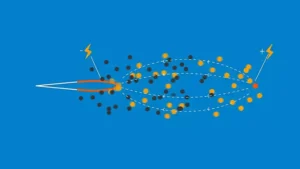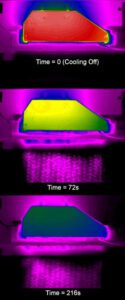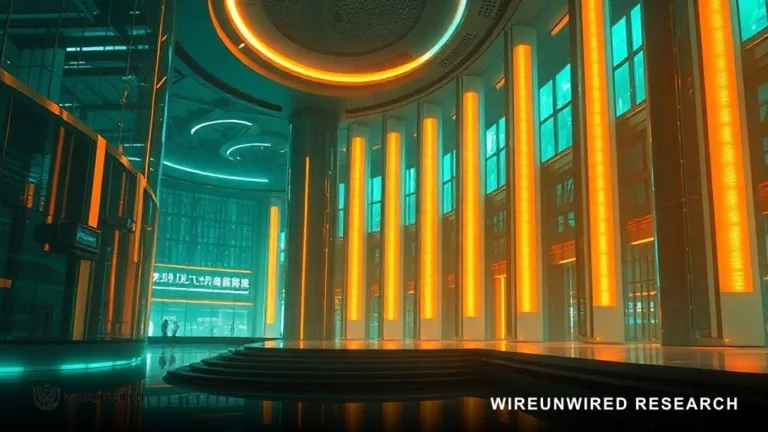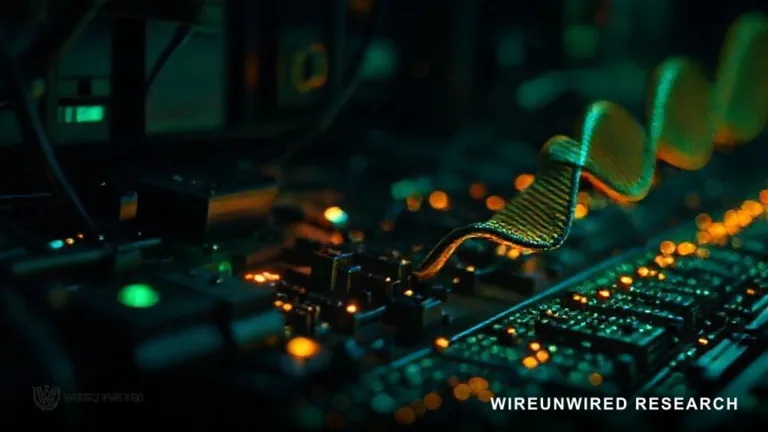
INTRODUCTION TO IONIC WIND
Imagine a future powered by wind – but not the kind of wind generated by spinning turbines. We’re talking about ionic wind, a silent yet potent gust produced by the dance between electricity and air. This phenomenon promises to transform everything from cooling our electronics to propelling spaceships through the cosmos.
In this article, we’ll explore the scientific magic behind ionic wind technology, highlight some of its game-changing real-world applications, and glimpse into the possibilities it holds for building a quieter, cleaner future.
You must be left wondering what is ionic wind ….
Ionic wind is the flow of air generated by the interaction of charged particles (ions) with neutral air molecules in an electric field. When a high voltage applied between electrode pairs such as sharp needles or small diameter wires and lesser curved surfaces gives rise to corona discharge around the electrode vicinity. The sharp edge acts as an emitter electrode and the other as a collector electrode. The high electric field around the electrode vicinity leads to electrical breakdown and causes ionization of the gas. The air molecules around the corona discharge region are ionized and driven towards the collector electrode. The ions collide with neutral molecules, resulting in momentum transfer of air. This movement is known as ionic wind.
 To achieve higher wind speed, different electrode configurations such as needle–cylinder, needle–plate, wire–plate, pin–mesh, pin–plate, wire–inclined wing, rod–plate, point–parallel plate, wire–wire, point–cylinder configurations with different numbers of needles and arrangements have been designed and developed.
To achieve higher wind speed, different electrode configurations such as needle–cylinder, needle–plate, wire–plate, pin–mesh, pin–plate, wire–inclined wing, rod–plate, point–parallel plate, wire–wire, point–cylinder configurations with different numbers of needles and arrangements have been designed and developed.
IONIC WIND SIGNIFICANCE IN PRESENT SCENARIO:-
The unique capability of ionic wind to surpass conventional limitations is what makes it significant. It provides silent, precise, and often fuel-efficient solutions in various fields, ranging from cooling electronics to propelling spacecraft. Unlike fans, it operates noiselessly, enhancing airflow in confined spaces such as laptops or creating gentle breezes without any disturbance. In the aerospace industry, it enables fuel-free propulsion for satellites and probes, thereby reducing launch weight and cost. Moreover, it holds promise for a cleaner future. Ionic wind air purifiers effectively capture dust, pollen, and even harmful bacteria, while ongoing research explores its potential to neutralize viruses and bacteria in the air. This silent breeze is not merely a scientific curiosity; it represents a whisper of revolution, pushing boundaries in diverse fields and offering a glimpse into a future where air itself becomes a tool for cleaner technology, quieter journeys, and healthier environments.
HISTORICAL BACKGROUND OF IONIC WIND:-
The ionic wind phenomenon has been known for centuries dating all the way to Francis Hauksbee who first observed the “electric wind” phenomena in 1709, with such notable scientists such as Sir Isaac Newton, Benjamin Franklin, and Michael Faraday all recording their own observations of the effect In the modern era, ionic winds began to be considered for practical engineering applications with two seminal publications by Stuetzer (1959) and Robinson (1961), who developed some of the fundamental relations still used today. Though investigations for heat transfer applications enjoyed some attention in the 1960s and 1970s, it is only recently that it has become a viable technological option, with companies such as Tessera Technologies, Inc. and Ventiva exploring technologies for laptop and LED cooling.
APPLICATIONS OF IONIC WIND
Silent Propulsion for Aviation
MIT researchers developed a model plane that flies purely using ionic wind (electroaerodynamic) propulsion. It eliminates moving parts by generating ions between electrodes with 40,000 volts. The ions collide with air molecules to produce thrust. If scaled, this silent method can enable safer, cleaner future aircraft and drones.
Cooling Overheated Laptops
Tessera’s ionic cooler:- Laptop users are well-acquainted with the familiar sound of the fan whirring as it activates when the processor’s temperature reaches approximately 100 °F. With the continuous trend of smaller and thinner laptops and electronics, researchers are actively exploring alternative cooling techniques that minimize bulkiness and noise levels.

These infrared images show Tessera’s ionic-cooling system in action. After the device is turned on, a plume of air carries heat away from the system.
A unique concept involves utilizing ions to generate a cooling breeze by propelling air molecules across a heated microprocessor, thereby effectively cooling the system. While ionic-cooling systems have been previously showcased in research laboratories, Tessera, an international chip-packaging company headquartered in San Jose, CA, has successfully integrated an ionic-cooling system into a functional laptop.
Tessera’s ionic cooler is positioned in close proximity to a laptop vent. By utilizing heat pipes, which employ the process of evaporation and condensation of a fluid, the cooler effectively extracts heat from the laptop’s processing units and directs it towards the ionic-cooling system. The ionic-cooling device comprises of two electrodes: one that ionizes air molecules like nitrogen, and another that functions as a receiver for these molecules. When a voltage is applied between the electrodes, the ions migrate from the emitter electrode to the collector. As they traverse, their momentum causes neutral air molecules to be propelled across a heated area, resulting in its cooling.
Conclusion: Whispering a Brighter Future
From enabling simple flying machines to keeping our computing devices chill, ionic wind technology hints at a quieter and cleaner future no longer solely powered by moving mechanical parts. As researchers refine electrode shapes for optimal ion flows, uncover new applications like air purification, or even integrate touch sensitivity, ionic wind’s silent magic continues to spread its wings beyond the lab into mainstream adoption.
Discover more from WireUnwired Research
Subscribe to get the latest posts sent to your email.



